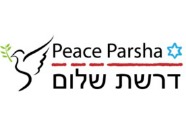 By Rabbi Lev Meirowitz Nelson
By Rabbi Lev Meirowitz Nelson
As we begin the Torah anew, we are reminded once again of the power of names. God calls the light “Day” and the darkness “Night” (Gen. 1:5); God then hands over this divine prerogative to Adam, having him name all the animals and, ultimately, Eve (2:19-23). Two parshiyot later, an angel instructs Hagar what to name her son, she responds by naming God (16:11,13), and God changes Abram and Sarai’s names (17:5,15). Names, clearly, have power.
That’s why I’ve been distressed at the way the names of Gilad Shaar, Eyal Yifrach, and Naftali Fraenkel—the three yeshiva students who were kidnapped and murdered back in June—are being put to use. By early July, a new settlement had been declared in their memory, its name bearing their initials. (See, e.g., this report from Public Radio International or from the settlers’ Arutz Sheva). In late August, Economic Minister Naftali Bennet gave this move an official blessing when he applauded the decision to expropriate 1000 acres of Palestinian land, saying it was an “appropriate Zionist response to murder.”
This is not a new development—in Lords of the Land, Idith Zertal and Akiva Eldar document the settler modus operandi of venting their anger by building new settlements or neighborhoods and naming them after the slain (2005, p. 259, 263-4, 271). But if we really want to honor the dead boys, if we truly want their names to live on, perhaps we would be better served by pausing to explore what their names stand for and then building a society accordingly. I hesitate to write in their name, since I don’t know what they or their families would actually want. Perhaps I should let them rest in peace and leave well enough alone? On the other hand, if the settler movement feels free to lay claim to them, I want a counter-voice speaking up in the name of my values.
Gilad is a name with a double valence. It means “eternal joy,” and yet biblically it is associated with warriors. Gilad was the strongest family of the tribe of Manasseh, giving Israel such leaders as the Judge Yiftach and the prophet Elijah.
Eyal, a hind, brings to mind Yedid Nefesh, from the beginning of Kabbalat Shabbat: “Let Your servant run to You [God] like a hind.” It also conjures imagery reminiscent of Shir Hashirim (Song of Songs), the great love poem attributed to King Solomon. The rabbis, of course, read Shir Hashirim as an allegory for the love between God and Israel. “Shir Hashirim, of Shlomo,” they interpreted—“Melech she-hashalom shelo,” The King of Peace (Shir Hashirim Rabbah 3:6).
Naftali is initially named for the struggle between Rachel and Leah (Gen. 30:7-8)—not a legacy that I would like to carry forward. When Jacob blessed his sons at the end of his life, though, he called Naftali a swift hind who brings good tidings (49:21). In midrash Bamidbar Rabbah, the rabbis expand on this, writing that Naftali was very devoted to the mitzvah of honoring one’s parents and used his great speed to deliver messages for Jacob (14:11).
This collection of images describes the Israeli society I want to see built as a tribute to these three slain boys: A society that is a source of joy to all its inhabitants and to its neighbors. A state that is strong in defense and restrained in attack, rushing to make peace and bring good news into the world. A nation drawn ever towards understanding and loving God, where young adults after their army service don’t have to go to India to find spirituality because they will have an abundance of inspiration and good role modeling at home. A people who honor its elders and does not only valorize youth and strength.
Such a State of Israel would truly be a fitting memorial for Gilad, Eyal, and Naftali. Another settlement that will be an obstacle for peace, a rallying point for protesters, a potential future evacuation site? That is simply a Tower of Babel, a monument built to human ego, destined to be a source of pain, confusion, and division.
Rabbi Lev Meirowitz Nelson is Director of Education at T'ruah: The Rabbinic Call for Human Rights. He first began to identify as a peace and coexistence activist in late high school, as a Bronfman Youth Fellow, upon learning for the first time about how Palestinian citizens of Israel are treated in East Jerusalem. This commitment led him to study Arabic in college, to rabbinical school at Hebrew College, and ultimately to his work at T'ruah.